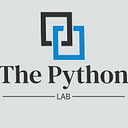Member-only story
Market Regime Detection: Using Unsupervised Learning to Forecast Bull, Bear, and Sideways Markets
Understanding market regimes is crucial for making informed investment decisions. Market regimes refer to different states or conditions that the market can be in, such as bull markets (characterized by rising prices), bear markets (characterized by falling prices), or sideways markets (characterized by little to no price movement).
Detecting market regimes can be challenging, as they are not always clearly defined and can change over time. However, by analyzing historical stock data, we can develop algorithms that automatically detect different market regimes using unsupervised learning techniques.
In this tutorial, we will explore how to develop an algorithm that fetches stock log returns using the yfinance library and applies unsupervised learning techniques like clustering or Gaussian Mixture Models to detect different market regimes. We will use Python for all the code examples and visualizations.
To follow along with this tutorial, you should have a good understanding of Python programming, basic finance concepts, and unsupervised learning techniques.
Table of Contents
- Getting Started
- Fetching Stock Data
